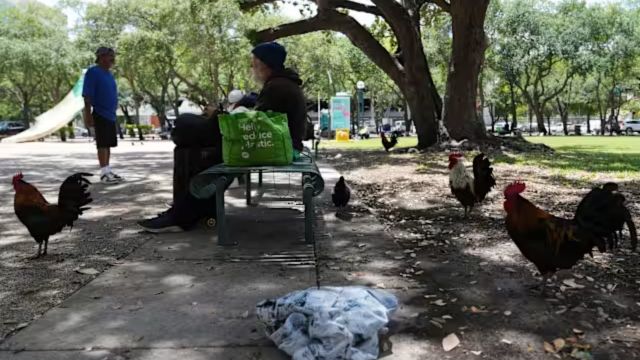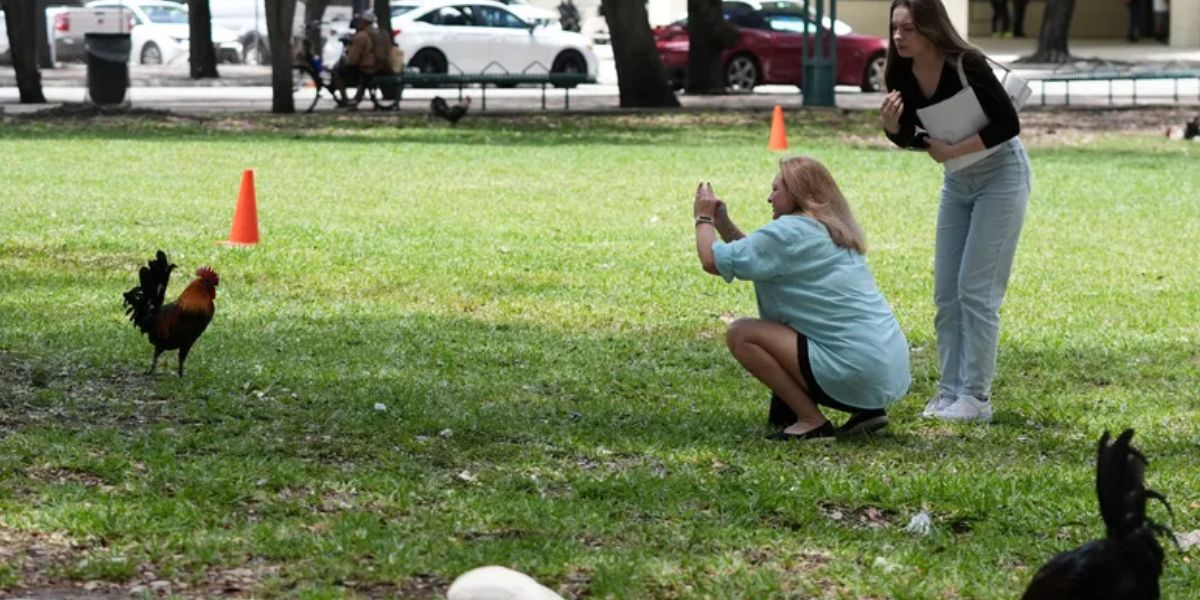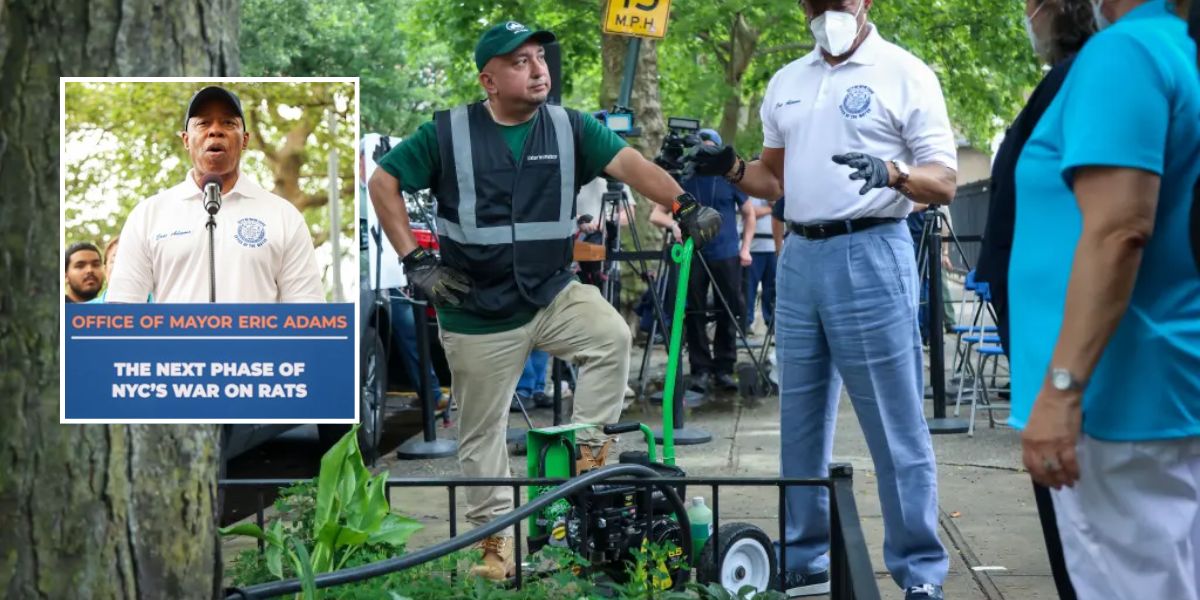Miami is home to a variety of wild birds, including flamingos, pelicans, herons, and parrots, but in recent years, roosters, hens, and young chicks have taken center stage.
The fowl families are settling amid the high-rises and government buildings downtown in addition to residential areas like Little Havana, Little Haiti, and Wynwood. Furthermore, a lot of people have made the rooster their unofficial city mascot, even though some find its crowing annoying.
According to HistoryMiami Museum resident historian Paul George, the chickens have a strong connection to the individuals who have migrated to Miami over the years.
About 20 years ago, George started to observe their feral counterparts traveling in public spaces after the domesticated birds had long been kept primarily in backyards.
“They’ve always had these hens and roosters around,” he remarked, referring to the cultural significance of the birds for those who grew up in rural Cuba and other regions of Latin America.
Many Florida areas, including Key West, Tampa, and St. Augustine, as well as other major American cities like New Orleans, Houston, and Los Angeles, are home to wild chickens.
In 2002, however, as part of a drive to commemorate the local culture, 6-foot (2-meter) fiberglass rooster statues started to sprout outside stores and eateries along Calle Ocho, which is Spanish for 8th Street. This marked the true adoption of the birds as a symbol in Miami’s Little Havana.
Dozens of the vibrantly painted statues, created by the late artist Pedro Damián, still draw tourists looking for entertaining picture ops more than 20 years later.
According to Jakelin Llaguna, owner of the Little Havana Visitors Center, a gift shop on Calle Ocho, the locals are mostly fond of the birds that roam the parks and businesses in the area.
“The neighbors have welcomed them,” Llaguna stated. “So they don’t mind if they’re in their backyard or in their front lawn. Nobody messes with them, they’re our mascot.”
According to Llaguna, the roosters’ crowing at dawn represents rebirth.
“The Cubans came to Little Havana when the revolution came into Cuba,” Llaguna stated. “They settled in this neighborhood, so they had a new beginning in Little Havana.”
Shirts, hats, glasses, and magnets are among the many items of rooster stuff that can be found in Llaguna’s store.

“Everybody wants a rooster,” Llaguna stated. “They want to take home a memento. They want have a memory of a fun time. And the rooster has turned into that.”
The invasive peacocks that have overtaken nearby towns like Coconut Grove and Coral Gables may soon compete with the feral roosters as they spread.
‘“The peacocks have very bad tempers,” George stated. “They’re pretty ill-mannered, and they tend to be a lot bigger than the chickens, and they make a lot of noise.”
George, meanwhile, is more worried that older communities may someday lose their feathered inhabitants as a result of gentrification and development.
George questions whether those who spend more than $1 million on a home will put up with the noisy birds when 50-year-old homes are replaced with brand-new condos.
“Even with hurricane windows, I just don’t think a lot of these people are gonna put up with it as the neighborhood becomes richer.” George stated. “And I think they’re gonna really lean on the city’s code enforcement for it.”
There is some ambiguity around the roosters’ and chickens’ legal status. Ordinances in Miami-Dade County and the city of Miami either forbid or severely restrict the use of live chickens in residential neighborhoods. In the meantime, the birds are free to fly around downtown, passing by courthouses, public parks, and offices.
Read Also: Six Virginia Democrats Compete for Lieutenant Governor Nomination
When questioned about the birds, county and local authorities pointed The Associated Press to their live animal statutes and explained that their presence was a code compliance issue.
Donato Ramos Martínez, who lives in Little Havana, loves to have the roosters and chicks around and even feeds them close to the Bay of Pigs Monument, which is off Calle Ocho.
“The rooster is the perfect animal for someone to wake up, because they begin to crow at about 4 a.m., from 4 to 5 a.m.,” Ramos Martínez stated in Spanish. “And it is an attractive animal that tourists, both young and old, are excited about, and they take their picture, you know what I mean?”
“And so I don’t understand,” he continued, “why there are some — excuse my language — some idiots who don’t want roosters or chickens or chicks on the street.”



